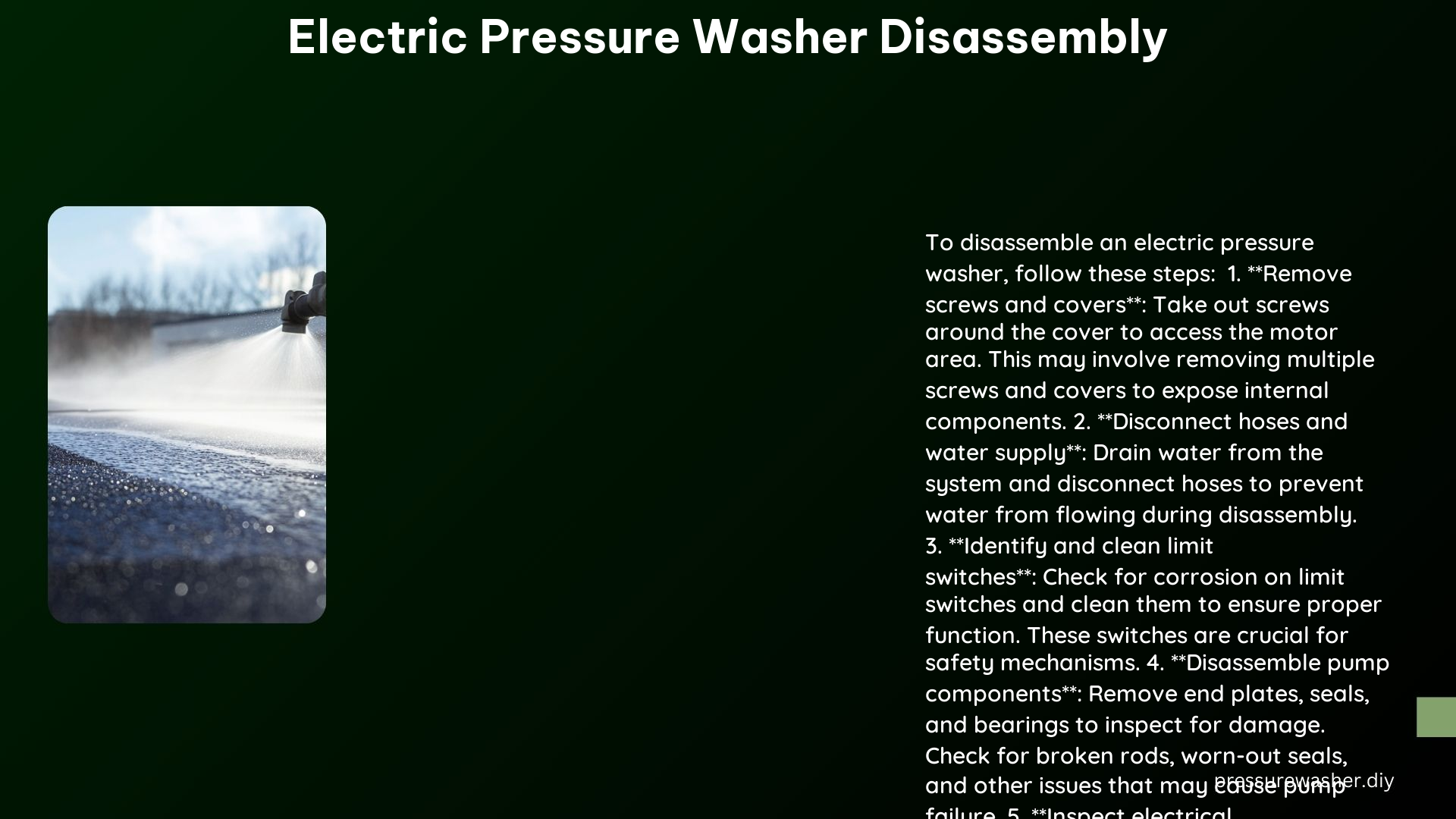Disassembling an electric pressure washer can be a complex task, but with the right knowledge and tools, it can be accomplished safely and effectively. This comprehensive guide will provide you with detailed instructions, technical specifications, and maintenance tips to help you navigate the disassembly process with confidence.
Safety Precautions
Before you begin the disassembly process, it’s crucial to prioritize safety. Adhere to the following precautions:
- Unplug the Unit: Ensure the pressure washer is unplugged from the power source to prevent the risk of electrical shock or injury.
- Wear Protective Gear: Equip yourself with safety glasses, gloves, and a face mask to shield your eyes, hands, and respiratory system from debris and potential chemical exposure.
- Drain the Water: Completely drain the water from the pump and hoses to prevent any unexpected water spraying during the disassembly.
- Use Appropriate Tools: Utilize the correct tools, such as screwdrivers, wrenches, and pliers, to avoid damaging the delicate components of the pressure washer.
Disassembly Steps

- Remove the Outer Casing: Begin by unscrewing or unclipping the outer casing of the pressure washer, exposing the internal components.
- Disconnect the Hoses: Carefully disconnect the high-pressure hose, the water inlet hose, and any other hoses connected to the pump and wand, taking care not to spill any remaining water.
- Remove the Pump: Detach the pump from the motor, making note of any electrical connections or mounting brackets that need to be disconnected.
- Disassemble the Pump: Carefully disassemble the pump, paying close attention to the valves, seals, and pistons. This step may require specialized tools, such as a pump rebuild kit.
- Inspect and Clean Components: Thoroughly inspect each component for signs of wear, damage, or corrosion. Clean the components using a suitable cleaning solution and a soft-bristled brush to remove any debris or buildup.
Maintenance Tips
Proper maintenance is crucial for the longevity and performance of your electric pressure washer. Follow these tips to keep your unit in top condition:
- Regularly Inspect and Clean the Pump: Regularly inspect the pump for signs of wear or corrosion, and clean it thoroughly to maintain optimal performance.
- Check and Replace Seals: Regularly inspect the seals, such as the pump seals and O-rings, and replace them as needed to prevent leaks and ensure a tight seal.
- Lubricate Moving Parts: Apply a suitable lubricant to the moving parts, such as the pistons and valves, to reduce friction and wear.
- Store the Pressure Washer Properly: Store the pressure washer in a dry, protected area to prevent damage from environmental factors, such as moisture and extreme temperatures.
Technical Specifications
Understanding the technical specifications of your electric pressure washer is essential for proper maintenance and troubleshooting. Here are some key specifications to consider:
- PSI (Pounds per Square Inch): The pressure rating of the washer, typically ranging from 1,000 to 4,000 PSI.
- GPM (Gallons per Minute): The flow rate of the washer, typically ranging from 1 to 4 GPM.
- Motor Type: Electric pressure washers commonly use universal motors or induction motors.
- Pump Type: The pump type can vary, including piston pumps, plunger pumps, or axial pumps.
References
- YouTube – Pressure Washer Basic Troubleshooting (How to disassemble)
- YouTube – How to fix a cheap-ass pressure washer
- Reddit – Pressure washer disassembly
- YouTube – How To Fix Electric Pressure Washers
- YouTube – Teardown of a Pressure Washer Pump
By following the safety precautions, disassembly steps, and maintenance tips outlined in this comprehensive guide, you’ll be well-equipped to tackle the disassembly of your electric pressure washer with confidence. Remember to always prioritize safety and use the appropriate tools and techniques to ensure a successful and efficient disassembly process.
